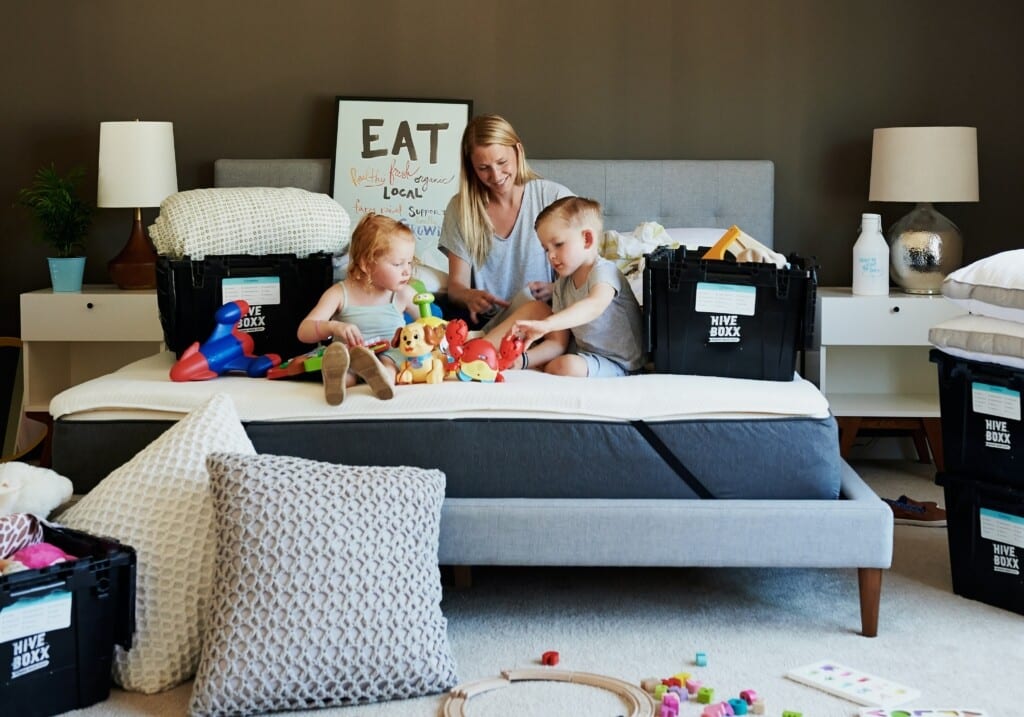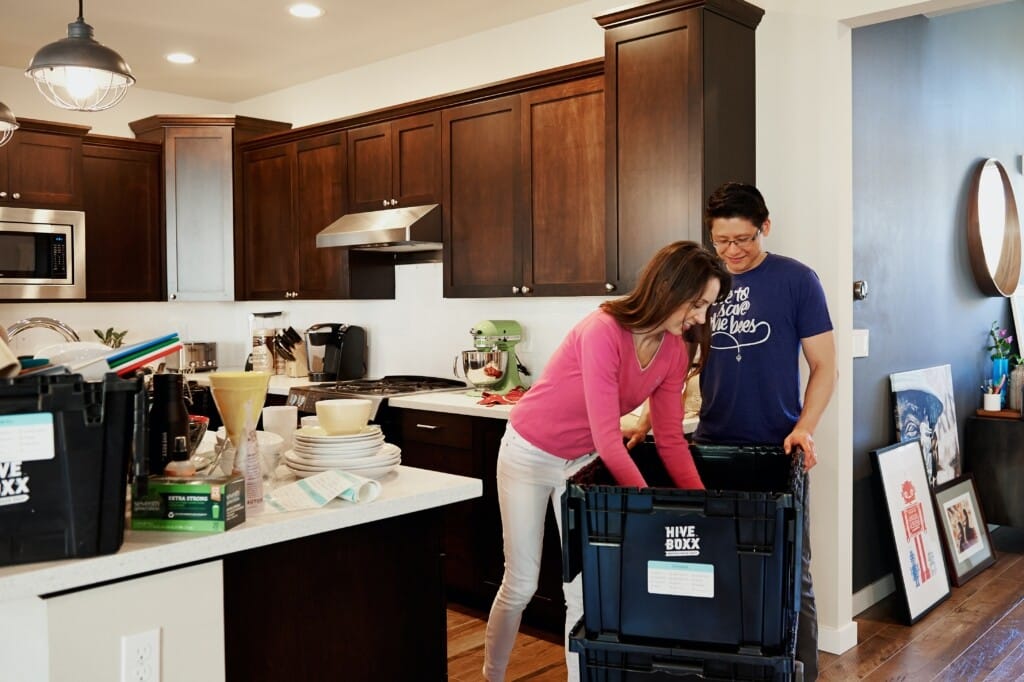What to Do After Your Big Move

Moving into a new house can be thrilling and daunting at the same time. Suddenly, unpacking, chores, and utility responsibilities are your immediate concern, and it’s no wonder that some new homeowners feel overwhelmed when they move.
But what exactly should you do after moving into your new home, and when should you do it? These are important questions that, thankfully, can be split into step-by-step essentials.
Read on for 19 steps to take as soon as you move into your new home!
1. Create A To-Do List
Don’t let all the moving boxes and various tasks get the better of you! It’s important to stay organized during the entire moving process, as things quickly become overwhelming. Write out a to-do list that prioritizes the essential tasks, and follow it!
2. Check Your Deliveries
First things first, make sure all your items have been delivered to your new address and are in good condition. Take out your detailed inventory list, ensure each item has been moved inside, and note which room the boxes end up in.
If you spot any signs of damage to furniture or excessive denting on the boxes, notify your moving company immediately. You should inspect your goods sooner than later so that if anything is wrong, the moving company can work to resolve the issue.
3. Inspect the House
One of your first tasks should be to inspect the house thoroughly. This includes checking each room for signs of damage, like water leaks or fire impairment. Inspect the plumbing for leaks, faucets for drips, and toilets for overflow.
You should also scour each nook and cranny for signs of critters like ants, bedbugs, or other household pests before the furniture and boxes get moved in. Check the perimeter of your yard, foundation, and fence line to ensure no issues are present there.
4. Childproof
If you are moving with kids or toddlers, make sure to childproof the house ASAP. This goes beyond typical house security and will take additional time to identify and rectify all potential hazards in the new household that can harm your little one.
Experts recommend that you start childproofing in the rooms where your child will spend the most time, including their nursery or bedroom. Then, work your way to the bathroom, living room, kitchen, and any stairways that pose safety risks to children.
5. Clean the House
The process of moving in itself will add dust, dirt, and other debris to your home, but it’s important to take time to clean the entire house before unpacking all of your moving boxes or setting up appliances.
Vacuum floor areas that will host large appliances, clean the carpets before putting together bed frames, and thoroughly dust all windowsills and doorways. Invest in quality cleaning products to get the job done and turn your new house into a welcoming home!
6. Connect Appliances
It’s a good idea to promptly address all major appliances when moving in and connect them safely. Make sure to check the manufacturer’s instruction booklet for larger appliances for specific moving and powering-on guidelines.
Small items like microwaves and toasters can be plugged in immediately. But refrigerators are fragile units and need to sit upright in their final kitchen locations for at least three hours before being plugged in and turned on.
7. Unpack Room-by-Room

To avoid getting overwhelmed, try to allocate your unpacking to one room at a time. Start with the most frequented areas, like the kitchen and bathroom, then move to communal spaces like the living and dining rooms.
8. Unpack Essentials First
Don’t worry about unpacking items that you will not use right away or decorative goods. Instead, focus on what is most important to your immediate needs.
You should set up the bedroom right away, unpack kitchen essentials so you can prepare meals, and leave all unessential items to be sorted out later. Ensure the bathroom has everything you need to get clean, and worry about the paintings later!
9. Take Care of the Utilities
Get all your fundamental utilities up and running on move-in day, including water, electrical, and gas. By phoning your power and water providers ASAP, you can ensure working lights and hot water to be used while moving in and cleaning up.
Don’t forget to contact other services, including Wi-Fi, cable TV, and telephone providers, to stay connected to the rest of the world while moving in!
By arranging your utilities first thing, you can ensure the entire process runs smoothly.
10. Locate the Main Essentials
Ensure you know where essentials are located as soon as you move in. This includes the circuit breaker box, water main valves, and all other water and power sources, should you need to cut them at the main source.
Additionally, you should label all fuses and valves for easy identification and familiarize yourself with the various utility systems. Test them early on to avoid confusion in the middle of an emergency and get them fixed right away if they are faulty.
11. Make it Pet-Friendly
If you have moved with your furry friends, ensure your new home is safe and comfortable for them, too! Set up their crate or bed for a familiar place to relax amid all the bustle, and install pet-safe gate mechanisms or dog runs outside to keep them from getting loose.
Additionally, you should monitor your pets closely during the move-in process. They might experience nerves or separation anxiety in a new setting, so ensure they are comfortable as they get used to a new house and the neighborhood’s scents and sights.
12. Secure Your Surroundings
Security is key when moving into your new home, so get it sorted out as soon as possible. Ensure each floor has a fire extinguisher and several working smoke and carbon monoxide detectors.
Check all doors and windows around the house to ensure they close and lock securely and consider putting in a security system or burglar alarm. If you feel it necessary to change the locks, line up a locksmith for the day after moving in so you can get new keys.
13. Update Your New Address (family, friends, utility, important institutions)
Updating your new address is essential to a smooth moving transition. Make sure your family and friends know where you are located, along with various other institutions, including the following:
- Bank
- Health Insurance Provider
- Pension Provider
- Post Office
- University or College
- Utility Companies
- Workplace
You may also want to update your address on Amazon.com or other online retailers, so you don’t accidentally send a package to your old address. If you have any monthly subscription boxes, such as IPSY or FabFitFun, you will also want to update your address there.
14. Reduce, Reuse, Recycle
Inevitably, unpacking will leave you with heaps of packing materials. However, by either saving them for reuse later or recycling them at proper institutions, you can avoid leaving a harmful footprint on the environment every time you move.
15. Meet the Neighbors
Put your best foot forward and greet your new neighbors as soon as you move in. A friendly hello and introduction can go a long way in making friends with people in your new community! You might even get some tips on local activities or sights to enjoy.
If you are nervous about meeting your neighbors, don’t sweat it! There are plenty of tips to help you make a great first impression.
16. Register Your Vehicle
Don’t forget about your car when you have moved to a new location! If you have relocated to a different state, you need to register your vehicle there, transfer your license, and apply for any vehicle permits required by local regulations.
Visit your local DMV office with your license and proof of insurance to start the process, and keep an eye on the deadline—most states give you a window of 10 to 30 days to complete these changes.
17. Find Health Care Providers
When moving to a new location, one of the most important tasks is finding health care providers that service your area. So research local doctors, dentists, optometrists, and other specialists that you may need, as well as nearby hospitals in case of emergencies.
18. Rate Your Movers

Help others by submitting a review of your moving company. This generally takes under five minutes to complete, either on the moving company’s website or through Google reviews, and will help other people decide on a service.
Not only will your review assist other potential movers, but it can serve as a dispute solver if there have been any complications during the entire moving process. Moving companies take reviews seriously and work to handle online customer complaints.
19. Re-Assess Your Financials
Once the hard part of moving is over, you should sit down with your family and discuss the financial situation. Moving is an expensive endeavor, and addressing any budgetary changes that need to be made is important for everyone involved.
Now get to moving into your new home and start checking these items off your to-do list, so you can start settling into your new surroundings.



